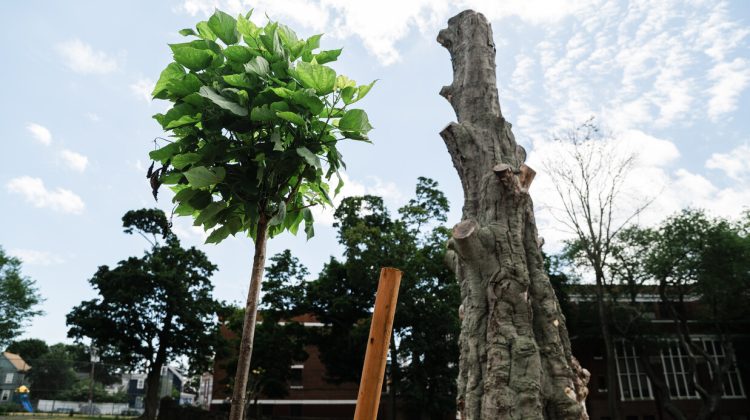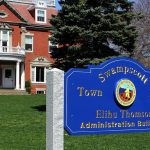SWAMPSCOTT — The town has been busy planting trees in various locations around town with the help of a grant it received from the Executive Office of Energy and Environmental Affairs (EEA) Division of Conservation Services for $95,201.40.
Funding for the project will help support efforts to mitigate the rising heat residents in town are experiencing, with the focus being to plant new trees at locations like the commuter rail station, Phillips Park, Clark Playground, and the new elementary school.
The town has contracted Leahy Landscaping to help with the project.
Interim Town Administrator and Department of Public Works Director Gino Cresta, who is also the town’s tree warden, spoke with The Item about the progress of the project.
“The Tree Committee worked with Community and Economic Development Director Marzie Galazka, and the town was able to secure a grant just south of a hundred thousand dollars to plant these trees,” Cresta said. “Leahy Landscaping is currently planting and will be maintaining the trees we’ve planted for the next two years, which is a huge win for the town.”
The number of trees varied among the spots where they were planted: five Scarlet Oaks were planted at the train station; five Scarlet Oaks were planted at the Ewing Woods path at Swampscott Elementary School; four Tupelos and three Sweetgum trees were planted at Clark School; seven Scarlet Oaks and one Tulip tree were planted by the tennis court at Swampscott Middle School; and three American Sycamore and four Swamp White Oaks were planted at Phillips Park.
Climate Action and Resilience member Suzanne Hale elaborated on the work that went into the project.
“Due to the specifications of the grant and because we are only able to address town-owned land, we focus on areas that have had recent tree canopy loss and/or have significant heat island effect. We focused specifically on getting shade around recreation facilities and playgrounds,” Hale said, “especially the one at Phillips Park as turf gets significantly hotter than natural materials and can lead to burns.”
Cresta explained that some areas needed more attention than others.
“One of the areas that I’m most proud of is by the train depot,” he said. “We put half a dozen trees over there. … We also put some down at Phillips Park, Abbot Park and we’re checking to see if we can plant trees in the middle school parking lot.”
He said there were no unexpected challenges encountered during the project. “They’ve done a great job so far, they came right in and started planting them. … It’s going great.”
Cresta explained what’s left to complete. “They have to cut out some concrete down at Phillips Park, down by the playground,” he said. “And we’re also looking to put a whole row of trees in the upper parking lot at the Middle School.”
“By choosing native, climate-resilient species tailored to the specific needs in each location, we will increase biodiversity and offer long-lasting cooling and air filtration for our community. Continuing to add to our tree canopy aligns with the Natural Resources Goals 1 and 2 of the Resilient Swampscott Climate Action Plan (unanimously adopted by Town Meeting in May 2023),” Hale said.
Hale continued, “Additionally, we hope to inspire residents to plant native, climate-resilient trees on their property, since the vast majority of tree canopy loss in Swampscott is on private-owned land (please see attachment on Tree Canopy study from Salem State). We can only do so much as a town, so it’s imperative for residents to take up the torch from us and join us in creating cool corridors everywhere in town.”





